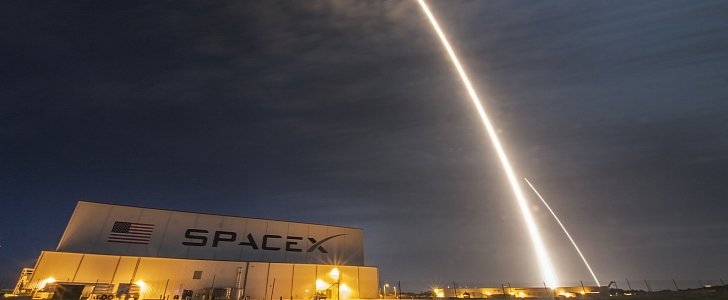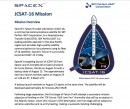The company celebrated eight successful launches this year, and they were done with the help of the Falcon 9 rocket. It landed on the “Of Course I Still Love You” drone ship, and it was carrying a Japanese communications satellite.
The Falcon 9 rocket has also landed on the “Just Read the Instructions,” so this goes to show that someone has a sense of humor over at the Autonomous Spaceport Drone Ship naming department from SpaceX.
The rocket was launched from Cape Canaveral, and everything went as planned. The first stage of the propulsion re-entered the Earth’s atmosphere and successfully landed on the drone ship with the funny name approximately six minutes after the flight had begun.
The cargo was a satellite called JCSAT-16, which is set as a backup for other JSAT units currently on orbit. It was successfully placed in Geostationary Transfer Orbit at the highest point of 36,000 kilometers. The same satellite operator had launched the JCSAT-14 last May with SpaceX, so the two companies are not in their first encounter.
The satellite is a Space Systems Loral telecommunications unit that carried Ku-band and Ka-Band transponders. These help provide more stable satellite services in the Asia-Pacific region.
In Japan alone, it has customers in approximately 3.4 million households, which receive over 250 channels through their Direct-to-Home satellite broadcasting platform, “SKY PerfecTV!”
As SpaceX has already explained in a press release, the vertical landing on the drone ship was a secondary mission objective. The vessel was posted in the Atlantic Ocean, and the rocket had to endure the challenges of re-entry heating, as well as the velocities associated with such events.
The entire mission took 32 minutes since liftoff to satellite deployment. However, the team focused on the launch and began specific procedures with 38 minutes in advance, as all operators have to do when performing such missions. With every little step like this, Elon Musk gets closer to his dream of sending people into space.
The Falcon 9 rocket has also landed on the “Just Read the Instructions,” so this goes to show that someone has a sense of humor over at the Autonomous Spaceport Drone Ship naming department from SpaceX.
The rocket was launched from Cape Canaveral, and everything went as planned. The first stage of the propulsion re-entered the Earth’s atmosphere and successfully landed on the drone ship with the funny name approximately six minutes after the flight had begun.
The cargo was a satellite called JCSAT-16, which is set as a backup for other JSAT units currently on orbit. It was successfully placed in Geostationary Transfer Orbit at the highest point of 36,000 kilometers. The same satellite operator had launched the JCSAT-14 last May with SpaceX, so the two companies are not in their first encounter.
The satellite is a Space Systems Loral telecommunications unit that carried Ku-band and Ka-Band transponders. These help provide more stable satellite services in the Asia-Pacific region.
In Japan alone, it has customers in approximately 3.4 million households, which receive over 250 channels through their Direct-to-Home satellite broadcasting platform, “SKY PerfecTV!”
As SpaceX has already explained in a press release, the vertical landing on the drone ship was a secondary mission objective. The vessel was posted in the Atlantic Ocean, and the rocket had to endure the challenges of re-entry heating, as well as the velocities associated with such events.
The entire mission took 32 minutes since liftoff to satellite deployment. However, the team focused on the launch and began specific procedures with 38 minutes in advance, as all operators have to do when performing such missions. With every little step like this, Elon Musk gets closer to his dream of sending people into space.
JCSAT-16 comms sat deployed into planned Geostationary Transfer Orbit with 36,000 km apogee (high point in orbit) pic.twitter.com/zScDgaOSzY
— SpaceX (@SpaceX) August 14, 2016
Falcon 9 first stage entry burn underway. Second stage and JCSAT-16 continuing nominally into orbit pic.twitter.com/fnFAAtuvpm
— SpaceX (@SpaceX) August 14, 2016










